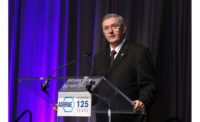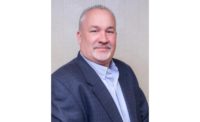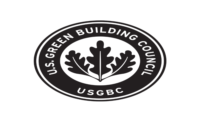ATLANTA — Buildings and communities will regenerate and sustain the vitality of all life within one generation. That was the vision touted by more than 10,000 sustainability and green building leaders at the Greenbuild International Conference & Expo, presented by the U.S. Green Building Council (USGBC), Nov. 19-22 in Atlanta.
Greenbuild 2019, now in its 18th year, featured four days of inspiring sessions and speeches from individuals including civil rights activist Dr. Bernice King, architect and MacArthur Fellow Jeanne Gang, youth climate activist Jamie Margolin, climatologist Dr. Marshall Shepherd, and former President Barack Obama.
“Many people may not be thinking about how a building impacts them or their environment,” said Kim Heavner, vice president, conferences and events at USGBC. “That’s why this year’s theme, ‘A New Living Standard,’ explored how we can broaden that conversation and help connect the dots between people and the places where they live, work, learn, and play.”
Presidential Keynote
Speaking with Mahesh Ramanujam, president and CEO, USGBC, the 44th president of the United States, Barack Obama, discussed the critical issues facing society today and reflected on life since leaving the White House.
“It’s great,” exclaimed Obama, referencing his life post-presidency. “I’m getting more sleep. Michelle and I get more time together, which is fantastic. I reflect in her glory. The things you don’t miss is the fuss; the trumpets, salutes, and pomp and circumstance. You do miss the work, because it’s fascinating. You always have a set of problems, and there’s a process of figuring out how you’re going to solve these big challenges. And, you miss the team you were able to build. And, occasionally, you miss Air Force One. You know that plane has a shower.”
When asked to identify the most compelling issue in the world today, Obama responded by citing that two directly connected issues top his list: climate change and global economic inequality.
“The reason I say those two things are connected is that it is hard to figure out how we solve sustainability issues and deal with climate change if you also have huge gaps in wealth and opportunity and education,” he said. “Because what happens — and we’re seeing this around the globe — is that as wealth gets more and more concentrated and more and more energy is used up by the few, the many become resentful and it undermines our sense of politics and a sense of community. It’s hard for us then to mobilize the body politic around taking collective action.”
He identified climate change as an existential issue. Unlike having bad tax policy for four or eight years, which can be corrected with time.
“This is one of those [issues] where you can be too late,” he said. “So, I know of no issue that is more urgent than that.”
LEED Positive
During Greenbuild, the USGBC introduced LEED Positive – a vision statement and LEED development roadmap that will lay the foundation for a future of LEED that is regenerative.
“We must do all we can to leverage our tools and resources to scale up reductions in carbon emissions associated with buildings, communities and cities,” said Ramanujam. “LEED must evolve qualitatively and quantitatively. Qualitatively, it must transition from strategies that reduce the harm done by buildings to strategies that cause no harm and are regenerative by design, ensuring our buildings are actually giving back more than they take. And quantitatively it will need to accelerate and increase its impact ten to a hundred-fold by leveraging our Arc performance platform. The future of LEED is LEED Positive.”
In the 20 years since its launch, with more than 100,000 projects now engaged, the LEED rating system has catalyzed changes in the building industry related to energy, water, waste, indoor environmental quality, and more. From mainstreaming cool roofs, low-volatile organic compound (VOC) paints, building efficiency, and commissioning to providing the proof of concept enabling dramatic increases in the stringency of energy codes, LEED has defined green building standards.
The LEED Positive vision will guide USGBC in transitioning LEED from strategies that reduce the harm done by buildings to strategies that cause no harm and begin the process of healing and repair.
LEED Positive will encourage development that allows buildings to become a vehicle for environmental restoration and repair. The vision is composed of several parts that will work together to guide the development of the LEED rating system, including:
1. Proposed LEED Positive targets for energy and carbon reduction that will require new construction to go further and push existing buildings with high energy usage to substantially increase their efficiency efforts;
2. Define LEED Positive targets for other LEED credit categories that make up the holistic
LEED rating system;
3. Continue investment in LEED v4.1 to accelerate the implementation and adoption of
LEED for both new and existing buildings; and
4. Support category level performance certificates through the Arc platform to provide existing buildings with a pathway to LEED certification.
“Thanks to LEED v4.1, we are seeing increased interest from existing buildings in LEED certification,” said Melissa Baker, senior vice president of LEED technical core at USGBC. “This is crucial because existing buildings represent our largest market segment, providing category level performance certificates is an important catalyst in further accelerating the transformation of our existing buildings.”
Atlanta Certified
The City of Atlanta, this year’s Greenbuild host city, marked the 100th LEED certified city in the U.S. USGBC launched LEED for Cities and Communities in 2016 as a globally consistent framework for measuring and tracking sustainability at the city and community scale. The rating system tracks progress across key performance indicators, including energy, waste, water, transportation, resilience, health and equity.
Atlanta’s Mayor Keisha Lance Bottoms and USGBC’s President and CEO Mahesh Ramanujam announced the city’s certification and work during the conference’s Wednesday keynote.
“We have been envisioning a new way forward for the growth of resilient, green, inclusive and smart cities and communities and believe that by focusing on performance we can better understand how our decisions impact the planet and our quality of life,” said Ramanujam. “Celebrating this milestone with the City of Atlanta here at Greenbuild is a tremendous honor. Atlanta’s work is an inspiration and shows how sustainability can be a tool for addressing some of the challenges residents are facing while also helping to reduce carbon, energy, and waste and conserve water. Atlanta and the more than 100 other LEED-certified cities and communities help open the door for new businesses and stimulates a robust green, economy.”
Atlanta’s Resilience Strategy was a central tenant contributing to its certification and builds on both the challenges and opportunities the city faces. By making resilience a key part of its sustainability strategy, the city is focused on efforts that support residents and address some of the region’s more pressing issues. Initiatives include the Atlanta Resilience Equity and Design Collective (RED Lab) partnership with Georgia Tech to help residents use data and technology to solve community issues that contribute to or detract from the livability of their neighborhoods. The EV Rideshare Program provides transportation services to those with low mobility access, including previously incarcerated individuals. Additionally, the city’s Clean Energy Plan is intended to move Atlanta to 100 percent clean energy by prioritizing equity and affordable clean energy options. The city has also made impressive strides in reducing energy consumption in buildings through the Atlanta Better Buildings Challenge and reached its 2020 goal of 20 percent reduction ahead of schedule. For more information on Greenbuild, visit www.greenbuildexpo.com.





